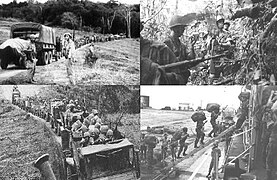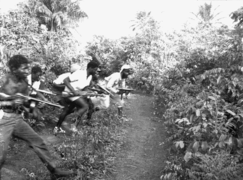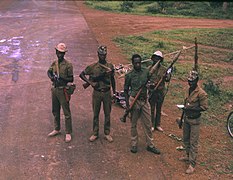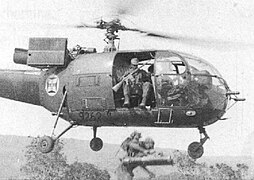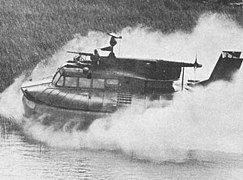Operation Kipling
| Operation Kipling | ||||||||||
|---|---|---|---|---|---|---|---|---|---|---|
 First row: troops in a "bush brief" in Pursat 1971, Troopers on patrol in Kandara 1967 Second row: a Bulkhi politicians car burns after it was ambushed in 1969, Daxian jet preparing to bomb Tanhai 1971 Third row: Burgoignesc legionnaire parachutists board a plane to be dropped into Kandara 1975, Burgoignesc Legion armored cars refueling in Umardwal 1976. | ||||||||||
| ||||||||||
| Belligerents | ||||||||||
| Liberty Coalition | Kandaran Communist Guerillas | Battganuuri/Umardi Communist Insurgency | Bulkawan People's Republic | Pursatni Communist Party and Army | ||||||
| Audonian ComIntern | ||||||||||
Operation Kipling was a series of wars fought by a coalition of nations led by Burgundie and Urcea against the Audonian ComIntern and various communist militias in Daria from 1966-1983. It diminished Burgundie's roles as a major player in global politics for the remainder of the 20th century, resulting in a societal shift that led to the end of a royal dynasty, but reinvested Burgundie in the destiny of western Audonia. It also, through war industry, launched some Middle seas region nations, firmly into the 20th century.
Background
Communism in Audonia goes back as far as in 1906 when Battganuuri philosopher Kass Gazisishir.
Combatants
Audonian ComIntern
Liberty Coalition
- Burgundie
- Urcea
- Kandara
- Umardwal
- Battganuur
- Bulkh
- Pursat
- Peshabiwar, to keep the Umardi communists from spilling into Pesh
Gallery
-
Burgoignesc soldiers on patrol in Andivaz province in Battganuur, 1968.
-
Burgoignesc PACV on patrol
-
Burgoignesc Hurricane Aircat airboat on patrol

